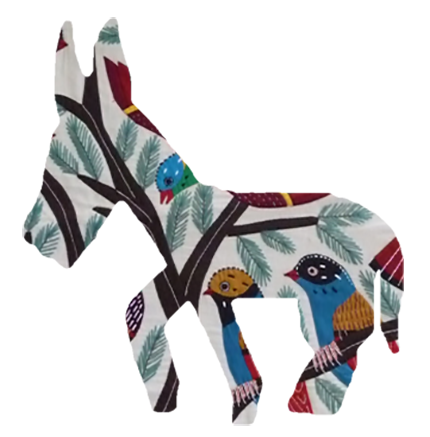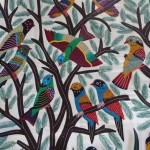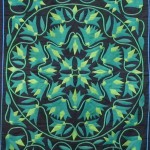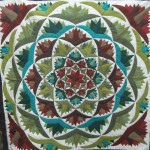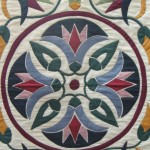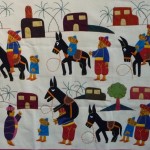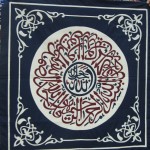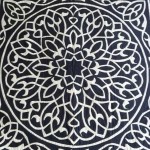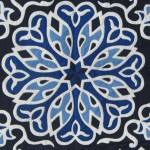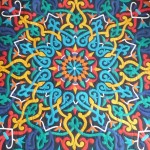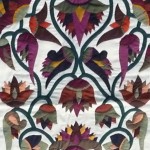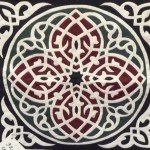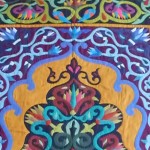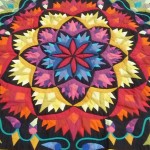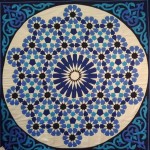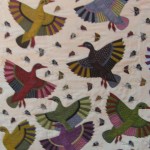Egyptians have always loved to celebrate and ‘tents’ or ‘Suradeq’ as they were known, made out of appliqued cloth patterns were used for their celebrations. They were used especially to mark the important occasions of life: – birth, marriage,death, for traditional and national holidays and also until as recently as the 1970’s for students sitting their exams, any time when extra accomodationn was needed to offer hospitality in the traditional way. Even today during the traditional holidays the streets will be decorated with ‘Suradeq ‘ material and stalls will be set up and decorated with vibrant colourful printed fabric of similar designs.
However this spectacular work of ancient times has largely been replaced by printed fabric which looks similar from a distance. This, along with other factors such as the lack of recruitment of young stichers (the work is low paid and not hugely respected now) and the current political situation, (which has meant a huge reduction in their other source of revenue from tourists and foreign residents), has meant a significant decline in the number of stitchers and a great concern for the loss of such an ancient and beautiful art form.
Is it a quilt ? is it a wall hanging? What is it? Khayma – means ‘tent’ and khayamia are the beautiful needle turned applique pieces done by the men in Chariah el Khayamia. These beautiful pieces were originally made as linings to decorate the inside of tents.
The quilts are not actually what we would call quilts as they are not 3 layers sandwiched together as we would expect a quilt to be. They are canvas backed cotton on to which brilliantly coloured complex and intricate applique designs are stitched. There are 4 main categories of designs Some are reminiscent of Celtic applique but are undoubtedly Islamic in design based on the ceings of mosques or floor or wall tile designs.
Others are very definitely pharoanic with designs resembling those from the tombs or palaces of ancient times with nature such as birds and the beautiful lotus flower which symbolises long life and happiness.
There are also the folkloric designs such as the story of Goha – and the Donkey for which the Al-Fattoh family made the illustrations and the typical village scenes village life such as the date harvest. The ancient art of calligraphy is not ignored and these have allowed the master craftsmen of the street beautiful calligraphic koranic works of art as well as expanding their imagination creating animals and birds out of words and sayings.

